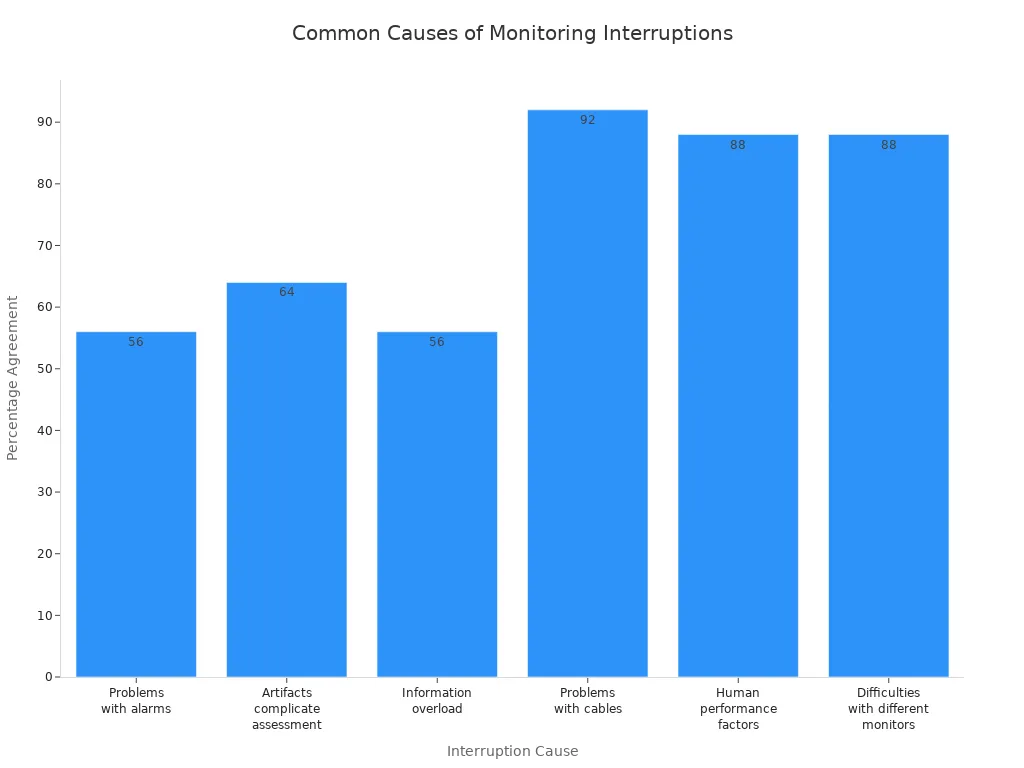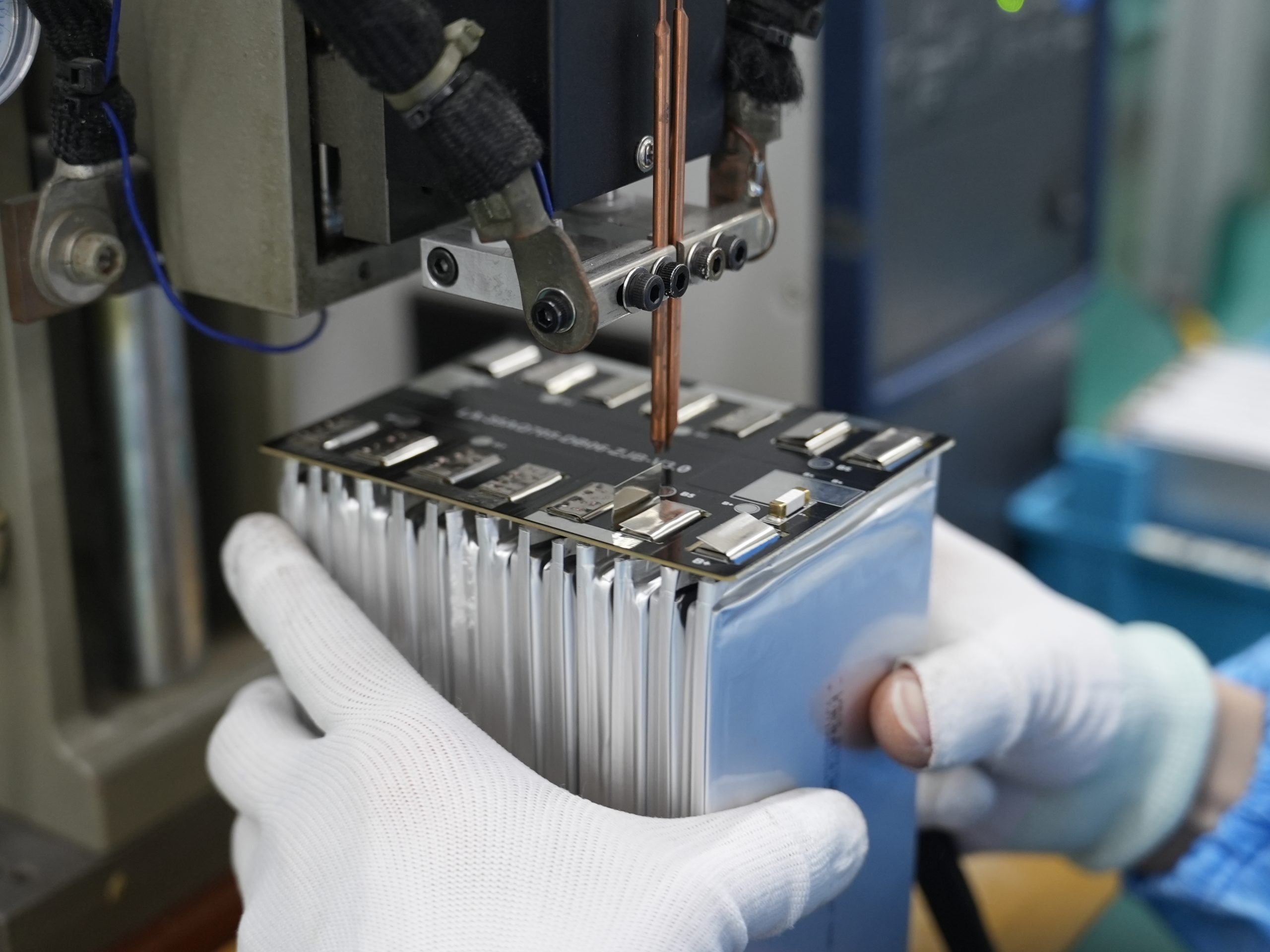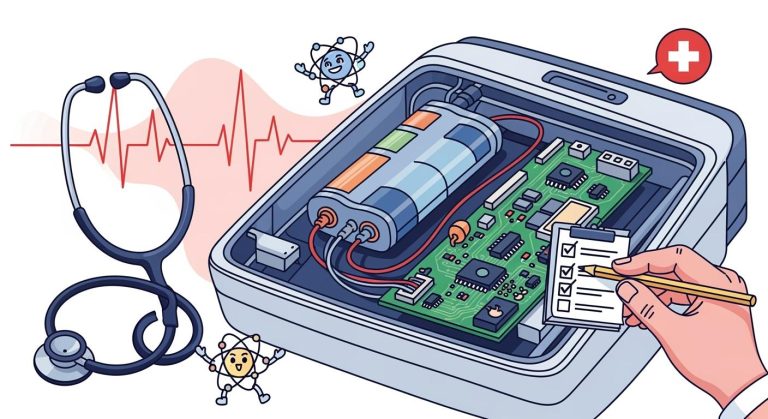
Imagine a patient monitor failing during surgery due to a sudden power outage. You risk patient safety when you do not secure a continuous care environment. Lithium-ion battery packs deliver continuous care by providing a reliable continuous power supply. You ensure continuous monitoring and uninterrupted care for every patient. Continuous care prevents critical gaps in care and supports medical teams in high-stakes situations.
Key Takeaways
Lithium-ion batteries provide reliable power for patient monitors, ensuring continuous care and safety during critical situations.
Regularly check and replace batteries to prevent unexpected failures and maintain uninterrupted monitoring for patients.
Choose high-capacity and hot-swappable batteries to minimize downtime and enhance efficiency in healthcare settings.
Part1: Continuous Care And Patient Monitors
1.1 Importance Of Continuous Monitoring
You rely on patient monitors to deliver uninterrupted patient care in every clinical setting. Continuous monitoring allows you to detect changes in vital signs instantly, which leads to faster interventions and better outcomes for patients. In critical care environments, real-time surveillance helps you respond quickly when a patient’s condition deteriorates. Early recognition of problems improves survival rates and reduces the time needed for intervention.
Evidence Type | Description |
|---|---|
Real-time Surveillance | Continuous monitoring allows for immediate detection of vital sign changes. |
Improved Response Times | Early recognition of patient deterioration enhances survival rates. |
Adaptation to Patient Needs | Surveillance systems are tailored to patient populations for effective care. |
Interruptions in patient monitors can have serious consequences. Problems with cables, human performance factors, and difficulties with different monitors are the most common causes of interruptions. The table below shows how these issues affect patient care:
Topic | Percentage Agreement |
|---|---|
Problems with alarms | 56% |
Artifacts complicate assessment | 64% |
Information overload | 56% |
Problems with cables | 92% |
Human performance factors | 88% |
Difficulties with different monitors | 88% |

You face frequent distractions and interruptions in healthcare settings. Nurses experience interruptions every two minutes, and each interruption increases the risk of medication errors by 12.7%. In pediatric wards, two-thirds of interruptions cause task delays, and one-fourth result in loss of concentration. Emergency department physicians encounter interruptions about ten times an hour, which can significantly affect patient care.
In emergency rooms, technology failures such as equipment malfunctions and communication breakdowns can lead to sudden monitoring issues. These failures increase the risk of malpractice and compromise patient safety. You must maintain continuous monitoring to prevent these risks and ensure the highest standard of patient care.
1.2 Role Of Lithium-Ion Batteries In Patient Monitors
Lithium-ion batteries play a crucial role in patient monitors by providing reliable power for continuous patient care. You benefit from their high energy density, which allows for compact and lightweight designs. This portability is essential in medical applications. Lithium-ion batteries store more electrical energy in the same volume compared to nickel-cadmium or lead-acid batteries.
Battery Type | Energy Density Comparison |
|---|---|
Lithium-ion | Higher energy density than Nickel Cadmium |
Nickel Cadmium | Lower energy density than Lithium-ion |
Battery Type | Energy Density Comparison |
|---|---|
Lithium-ion | Higher electrical energy storage in same volume compared to other batteries |
Other Medical Device Batteries | Lower energy density than Lithium-ion |
You gain several advantages with lithium-ion batteries in patient monitors:
High energy density (up to 270 Wh/kg) enables longer operation and compact device design.
Long lifespan (15-20 years) reduces replacement costs and supports sustainable patient care.
Advanced safety mechanisms, such as Battery Management Systems (BMS), prevent overcharging and overheating.
High round-trip efficiency (85%) lowers operational costs.
Minimal maintenance requirements reduce expenses compared to lead-acid or NiMH batteries.
Compact size allows easy movement of patient monitors, improving workflow and patient care.
Technological advancements in lithium-ion batteries further enhance patient monitors. Improved energy density, longer lifespan, quick charging, and smart technology integration support real-time monitoring and continuous vital tracking. These features enable you to deliver uninterrupted patient care in various medical scenarios, including home care, surgical tools, and implantable devices.
Advancement | Description |
|---|---|
Improved Energy Density | Lithium batteries provide higher energy density, enabling longer operation on a single charge. |
Longer Lifespan | These batteries have a longer lifespan compared to traditional battery technologies. |
Quick Charging | Enhanced charging capabilities reduce downtime for medical devices. |
Smart Technology Integration | Integration of smart technologies allows for real-time monitoring of patient vitals. |
1.3 Emergency Backup Power For Critical Care
You must ensure emergency backup power for patient monitors in critical care settings. Power interruptions can disrupt patient care and compromise safety. Lithium-ion battery packs provide reliable backup power, maintaining continuous operation during outages or equipment failures. You protect patients from risks associated with unexpected shutdowns, especially during surgery or intensive care.
Regularly testing battery health is essential to prevent unexpected failures. Regulatory bodies such as The Joint Commission and CMS require consistent operational functionality and safety measures for medical equipment. You must follow strict maintenance protocols to avoid compliance issues and ensure patient monitors remain operational during emergencies.
Lithium-ion batteries offer hot-swappable features, allowing you to replace batteries without interrupting patient care. This capability minimizes downtime and supports continuous monitoring in high-risk environments like pediatric wards, emergency departments, and operating rooms. You maintain compliance with healthcare accreditation standards and deliver uninterrupted patient care.
Tip: Schedule routine battery checks and replacements to ensure patient monitors always have reliable backup power. This proactive approach safeguards patients and supports your facility’s reputation for excellence in patient care.
Part2: Battery Solutions For Reliable Monitoring

2.1 Choosing The Right Lithium-Ion Battery
You must select lithium-ion batteries that meet the demands of healthcare environments. The right battery ensures reliability, safety, and uninterrupted power for patient monitors and other critical equipment. When you evaluate lithium-ion batteries, consider the following criteria:
Criteria | Description |
|---|---|
Reliability and Durability | Withstand various operating conditions and rigorous testing for long-term use. |
Energy Density and Longevity | High energy density is crucial for portable devices, with some needing batteries lasting up to 7 years. |
Safety Concerns | Secure from leaks/explosions and meet biocompatibility standards for patient contact. |
Regulatory Compliance | Adhere to regulations like ISO 13485 to ensure medical device safety and efficacy. |
You must also ensure compliance with international standards. IEC 62133 sets safety requirements for rechargeable lithium-ion batteries in medical devices. This standard addresses hazards such as overcharging and thermal runaway. Compliance with IEC 62133 is essential for safety and reliability. The standard is replacing previous benchmarks like UL 1642, reflecting the evolution of safety requirements in healthcare.
The standard addresses potential hazards such as overcharging and thermal runaway.
Compliance with IEC 62133 is essential for ensuring the safety of lithium-ion batteries in medical devices.
The standard is replacing previous standards like UL 1642, indicating an evolution in safety requirements.
Regulatory requirements influence your choice and maintenance of batteries. You must consider standards such as IEC 62133, UL 2054, ISO 13485, and IEC 60601-1. These standards focus on safety, enclosure integrity, quality control, and electrical safety. The table below summarizes their implications:
Regulatory Standard | Focus Area | Implication for Battery Selection |
|---|---|---|
IEC 62133 | Safety (overcharging, short-circuiting) | Ensures batteries are safe for use in medical devices |
UL 2054 | Battery enclosure integrity | Guarantees protection against fire exposure |
ISO 13485 | Quality control | Requires thorough documentation and quality assurance |
IEC 60601-1 | Electrical safety | Sets benchmarks for safety and performance |
You must work with manufacturers who prioritize regulatory compliance, manufacturing quality control, and postmarket surveillance. These practices ensure the reliability and safety of lithium-ion batteries in medical devices, robotics, security, infrastructure, consumer electronics, and industrial sectors.
2.2 Maintaining Battery Life And Performance
You must follow best practices to extend the lifespan and performance of lithium-ion batteries in healthcare monitoring equipment. Proper battery management reduces downtime and supports uninterrupted power for critical care equipment and life support systems.
Charge batteries at a slow rate and avoid overnight charging to maximize lifespan.
Store batteries in cool, shaded areas and avoid high charge levels.
Avoid temperature extremes when using or storing batteries.
Minimize time spent at 100% or 0% charge to reduce stress on the battery.
Routine maintenance protocols are essential for lithium-ion rechargeable batteries. You must not leave batteries unused for extended periods. Check the charge status after six months. The typical life of a lithium-ion battery is about two to three years or 300-500 charge cycles. Routinely check the battery’s charge status and monitor batteries approaching the end of their life. Charge or discharge the battery to approximately 50% of capacity before storage and at least once every six months. Store the battery at temperatures between 5 °C and 20 °C (41 °F and 68 °F). Always follow the charging instructions provided with your product.
Challenge No. | Description |
|---|---|
1 | Battery life |
2 | Portability or size |
3 | Patient safety |
4 | Secure data delivery |
5 | Integration |
You must address these challenges to maintain reliable battery backup for medical equipment and critical equipment. Manufacturers use protection circuit modules (PCM) to prevent internal short circuits and thermal runaway. They comply with battery safety standards such as UL 1642 and IEC 62133. Proper labeling and traceability of batteries throughout distribution are crucial for safety and compliance. You can learn more about battery management systems (BMS) and their role in monitoring battery health and performance.
The average lifespan of lithium-ion batteries in patient monitors is around three years. This lifespan varies based on maintenance and usage conditions. You should replace the battery within this time frame or if performance declines. Manufacturers conduct in-depth failure analysis to determine root causes and corrective actions, ensuring reliability for healthcare and other industries.
Tip: Schedule regular battery checks and replacements to prevent unexpected failures and maintain uninterrupted power for critical care equipment.
You must also consider environmental factors when disposing of or recycling lithium-ion batteries. Improper disposal can release hazardous waste into the environment. Toxic materials like lithium, cobalt, and nickel can leach into soil and water, causing pollution and health risks. Proactive recycling aligns with healthcare sustainability goals and reduces the environmental footprint of medical operations.
2.3 Enhancing Efficiency With High-Capacity And Hot-Swappable Batteries
You can enhance efficiency and minimize downtime by choosing high-capacity and hot-swappable lithium-ion batteries for patient monitors. High-capacity batteries maintain performance even after multiple cycles of use. Patient monitors operate for extended periods without frequent battery replacements, supporting continuous care in healthcare settings.
Hot-swappable battery technology allows you to replace drained batteries without shutting down devices. This feature ensures uninterrupted workflows and continuous operation of medical monitors and critical equipment. You do not need to rely on power outlets, which is crucial in emergency power scenarios and remote healthcare environments.
Healthcare providers can replace drained batteries without shutting down devices, ensuring uninterrupted workflows.
Medical monitors equipped with hot-swappable batteries allow for easy battery replacement, ensuring continuous operation without reliance on power outlets.
Hot-swappable battery technology allows for battery replacement without powering off the device.
This capability ensures continuous operation, which is crucial in healthcare settings.
It minimizes downtime, allowing for real-time access to patient data.
Medical monitor systems featuring hot-swappable batteries enable uninterrupted operations, enhancing patient monitoring capabilities.
Feature | Benefit |
|---|---|
High-Capacity Battery | Reduces frequency of battery changes, supports extended operation |
Hot-Swappable Battery | Enables battery replacement without device shutdown, minimizes downtime |
You gain cost advantages by investing in high-capacity and hot-swappable battery solutions. Continuous 24/7 operation prevents downtime associated with recharging, leading to cost savings. Centralized recharging reduces the need for multiple AC outlets, which is beneficial for older facilities with limited infrastructure. You can convert existing non-powered workstations into powered carts, reducing the need for new purchases and associated costs.
Note: High-capacity and hot-swappable lithium-ion batteries support uninterrupted power for patient monitors, critical equipment, and life support systems in healthcare, robotics, security, infrastructure, consumer electronics, and industrial sectors.
You must prioritize battery backup solutions that deliver reliability, safety, and efficiency. By selecting the right lithium-ion batteries and following best practices for maintenance, you ensure continuous care and protect patient safety in every healthcare scenario.
You rely on robust lithium-ion battery packs to ensure continuous patient monitoring and operational efficiency. Advanced battery management systems deliver uninterrupted power, enhance safety, and reduce costs. Regular checks and timely replacements prevent failures. Evaluate your current systems and request a custom consultation to optimize battery performance and sustainability.
FAQ
What makes lithium-ion battery packs ideal for patient monitors in healthcare and industrial settings?
You benefit from high energy density, long lifespan, and advanced safety features. Lithium-ion battery packs from Large Power support continuous operation in medical, robotics, and industrial environments.
How do hot-swappable lithium battery packs reduce downtime in critical applications?
You can replace depleted batteries without shutting down equipment. This feature ensures uninterrupted workflows in healthcare, security, and infrastructure sectors.
Where can you get expert advice on custom lithium battery solutions for your facility?
You can request a custom battery consultation with Large Power. Our team helps you select and maintain lithium battery packs for medical, industrial, and consumer electronics applications.






